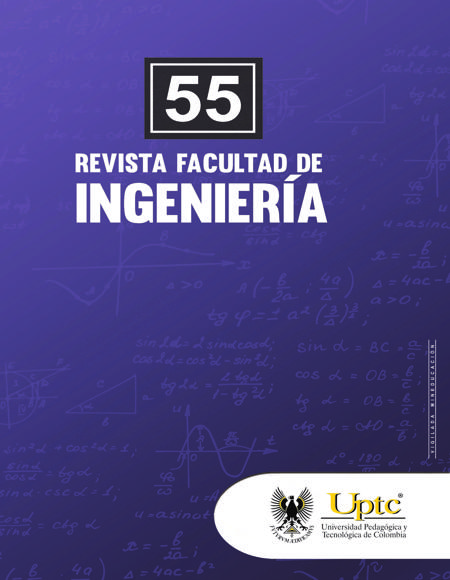Dynamic Lighting System to Increase the Attention of Design Students in the Classroom

Abstract
Dynamic lighting is playing a key role in education, by considering the main photometric variables such as the correlated color temperature and the illuminance to increase student’s attention levels inside the classroom. In the case of design students, the project component is fundamental for teaching, where students mainly need to develop activities such as presentation to listen to the teacher instructions, ideation and sketching to propose a solution according to the problem being addressed, and exhibition to present the work that has been done. These activities require specific and adequate lighting conditions to generate a positive impact on the performance of students. This article presents the design of a dynamic lighting system capable of adjusting the correlated color temperature in a range from 2500 K to 6500 K and the illuminance levels in a range from 0 lx to 800 lx to enhance the sustained and fixed attention of design students inside the classroom according to the type of activity that is being developed. The performance of the system was evaluated experimentally by measuring student’s attention inside the ergonomics and usability laboratory by using the Gesell chamber, the Emotiv Epoc EEG Headset with 14 electrodes to measure the brain activity and obtain engagement and focus levels, the eye tracking Tobii glasses, and a protocol to evaluate performance including several surveys and camera observation. In conclusion, the dynamic lighting system can improve the attention of design students by configuring the photometric variables according to the type of activity that is being done.
Keywords
attention, color temperature, dynamic lighting, education, illuminance, industrial design
Author Biography
Andres Eduardo Nieto-Vallejo, M.Sc.
Rol: Data curation, Formal Analysis, Software, Validation, Writing-Original draft, Writing- review editing.
Jorge Enrique Camacho, M.Sc.
Rol: Conceptualization, Data curation, Methodology, Project administration, Writing-Original draft.
Roberto Cuervo-Pulido, Ph. D.
Rol: Conceptualization, Methodology, Writing-Original draft, Writing-review editing.
Edgar Hernandez-Mihajlovic, M.Sc.
Rol: Conceptualization, Methodology, Writing-Original draft.
References
[1] W. Van Bommel, G. Beld, “Lighting for work: a review of visual and biological effects,” Lighting Research and Technology, vol. 36, no. 4, pp. 255-269, 2004. https://doi.org/10.1191/1365782804li122oa
[2] A. Hameed, S. Amjab, “Impact of Office Design on Employee’s Productivity: A case study of Banking Organizations of Abbottabad Pakistan,” Journal of public affairs, Administration and Management, vol. 3, no. 1, pp. 1-13, 2009
[3] A. Michael, C. Heracleous, “Assesment of natural lighting performance and visual comfort of educational architecture in Southern Europe,” Energy and buildings, vol. 140, pp. 443-457, 2017. https://doi.org/10.1016/j.enbuild.2016.12.087
[4] M. Winterbottom, A. Wilkins, “Lighting and discomfort in the classroom,” Journal of Environmental Psychology, vol. 29, no. 1, pp. 63-75, 2009. https://doi.org/10.1016/j.jenvp.2008.11.007
[5] M. Arbelaez. “Las representaciones mentales,” Revista de Ciencias Humanas, vol 29, pp. 1-8, 2002
[6] L. Bellia, F. Bisegna, G. Spada, “Lighting in indoor environments: Visual and non-visual effects of light sources with different spectral power distributions,” Building and Environment, vol. 46, no. 10, pp. 1984-1992, 2011. https://doi.org/10.1016/j.buildenv.2011.04.007
[7] C. Barkmann, N. Wessolowski, M. Schulte-Markwort, “Applicability and efficacy of variable light in schools,” Physiology and behavior, vol. 105, no. 3, pp. 621-627, 2012. https://doi.org/10.1016/j.physbeh.2011.09.020
[8] S. B. M. Tamrin, Y.G. N. Guan, C.C. Sia, K. Karmegan, “Effects of light’s colour temperatures on visual comfort level, task performances, and alertness among students,” American Journal of Public Health Research, vol. 1, no. 7, pp. 159-165, 2013. https://doi.org/10.12691/ajphr-1-7-3
[9] Y. Chen, Q. Sun, "Artificial intelligent control for indoor lighting basing on person number in classroom," in 9th Asian Control Conference, Istanbul, 2013, pp. 1-4. https://doi.org/10.1109/ASCC.2013.6606030
[10] Suresh S., H. N. S. Anusha, T. Rajath, P. Soundarya, S. V. P. Vudatha, "Automatic lighting and Control System for Classroom," in International Conference on ICT in Business Industry & Government, Indore, 2016, pp. 1-6. https://doi.org/10.1109/ICTBIG.2016.7892666
[11] Y. Wu, X. Pan, J. Yang, C. Yu, "Design and simulation of the auto-control system of classroom lights," in International Conference on Automatic Control and Artificial Intelligence, Xiamen, 2012, pp. 794-798. https://doi.org/10.1049/cp.2012.1097
[12] L. Martirano, "Lighting systems to save energy in educational classrooms," in 10th International Conference on Environment and Electrical Engineering, Rome, 2011, pp. 1-5. https://doi.org/10.1109/EEEIC.2011.5874691
[13] J. Luansheng, L. Chunxia, G. Xiumei, M. Chongxiao, “The Design of Intelligent Lighting System in College Classroom,” Energy Procedia, vol. 17, pp. 90-95, 2012. https://doi.org/10.1016/j.egypro.2012.02.068
[14] L. Changsong, D. Shuxia, "The research of LED intelligent lighting system based on the fractional order controller," in IEEE Workshop on Advanced Research and Technology in Industry Applications, Ottawa, 2014, pp. 469-471. https://doi.org/10.1109/WARTIA.2014.6976297
[15] A. Gupta, P. Gupta, J. Chhabra, "IoT based power efficient system design using automation for classrooms," in Third International Conference on Image Information Processing, Waknaghat, 2015, pp. 285-289. https://doi.org/10.1109/ICIIP.2015.7414782
[16] A. Silitonga, I. G. L. W. Indrawan, "Blind and lighting control to maintain comfort light intensity of the classroom utilizing Microcontroller ATmega8535," in International Conference on Information Technology and Electrical Engineering, Yogyakarta, 2013, pp. 438-443. https://doi.org/10.1109/ICITEED.2013.6676282
[17] A. Kim, S. Wang, L. McCunn, “Building value proposition for interactive lighting systems in the workplace: Combining energy and occupant perspectives,” Journal of Building Engineering, vol. 24, e100752, 2019. https://doi.org/10.1016/j.jobe.2019.100752
[18] W. Bando, M. Miki, N. Hiroaki, R. Tomioka, H. Aida, "Lighting Control to Optimize the Illuminance and Color Temperature Satisfaction in Working Areas," in IEEE International Conference on Systems, Man, and Cybernetics, Japan, 2018, pp. 2335-2340. https://doi.org/10.1109/SMC.2018.00401
[19] Y. Lin, W. Cheng, C. Wu, Y. Sun, "An intelligent lighting control system based on ergonomic research," in International Conference on Consumer Electronics, Communications and Networks, XianNing, 2011, pp. 4744-4747. https://doi.org/10.1109/CECNET.2011.5768912
[20] E. Hansen, S. Nielsen, D. Georgieva, K, Schledermann “The Impact of Dynamic Lighting in Classrooms. A Review on Methods,” In: Brooks A., Brooks E., Vidakis N. (eds). Interactivity, Game Creation, Design, Learning, and Innovation, Springer. https://doi.org/10.1007/978-3-319-76908-0_46
[21] B. Sun, Zhang, Cao, “Development and Implementation of a Self-Optimizable Smart Lighting System Based on Learning Context in Classroom,” International Journal of Environmental Research and Public Health, vol. 17. no. 4, e1217, 2020. https://doi.org/10.3390/ijerph17041217